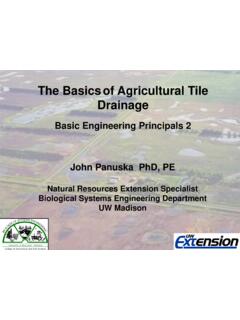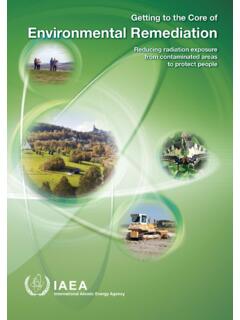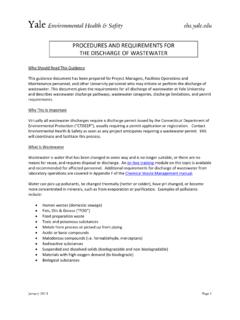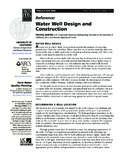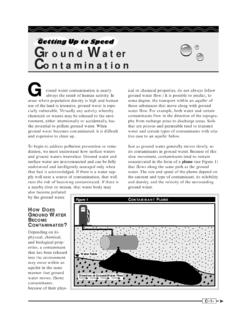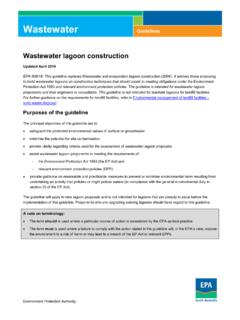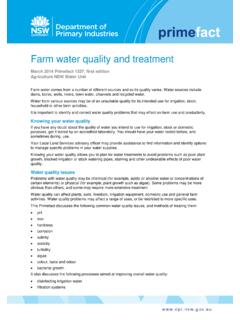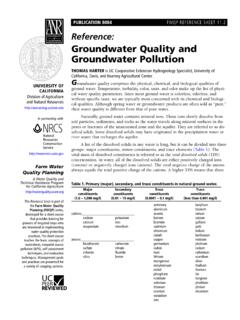Transcription of Behavior Change Theories and Techniques
1 Changing Public Behavior Behavior Change Theories and Techniques 1 March 2009, updated November 2015 Behavior Change Theories and Techniques Linking environmental management with Behavior Change goals requires an understanding of how to apply Behavior - Change Theories and Techniques . This resource offers an introduction to Behavior Change designed to guide educator planning. Educators can decide what to learn about people, how to select indicators of Change , and how to use audience information to create Change . The ideas included in Behavior Change Theories and Techniques are subtle and complex; they provide an overview of the following topics: I. Changing Behavior One Behavior and one audience at a time II.
2 Why do people Change their Behavior ? III. Using social assessment Techniques to identify target outreach behaviors IV. Choosing what to assess V. Creating Change After reviewing this introduction, you may want to investigate further on your own. Details about Theories introduced in this document are summarized in Tables I (p. 19) and II (p. 25). Figure 11 (p. 17) provides a diagram that integrates the Theories , elaborating on an Integrative Model developed by Fishbein and Cappella (2006). Table III (p. 31) provides an example for how to connect survey questions and Behavior Change Theories . The Changing Public Behavior project also provides a worksheet to help educators apply Behavior Change Theories as part of their planning effort, available on the Water Outreach Web site (UW ERC, 2007).
3 I. Changing Behavior One Behavior and one audience at a time Environmental outreach initiatives can only be truly successful if they Change those characteristics of individuals or groups that are contributing to an environmental management problem. If your goal is to Change human behaviors, you need to develop an understanding of the qualities and characteristics of the individuals and communities with which you work, and how those characteristics might impact the situation. This is known as the social or human dimension of environmental management. When you study the role of people in your situation, focus on behaviors in reference to a particular place, time, and community. This may include investigating relevant influences from each of four, broad, interrelating categories: sociocultural, economic, political, and historical.
4 At Changing Public Behavior Behavior Change Theories and Techniques 2 March 2009, updated November 2015 first glance this may sound overwhelming; it is, however, somewhat simplified in practice by focusing on one or more target audiences for an outreach initiative. Encouraging a Change in Behavior requires emphasizing a specific Behavior to be accomplished by a specific audience. A target audience is a segment of the population with potential to effect the desired Change ; a segment that is likely to be affected by the Change ; or both. The value of targeting an audience lies in: 1) identifying the particular benefits of and barriers to the preferred, as well as the competing behaviors, for the specific audience; and 2) optimizing the message and method to accomplish the educational objective (Stevens & Andrews, 2006).
5 As you consider a Behavior Change initiative, work with a team of experts and audience representatives to: Implement a planning process Consider a strategy for Change (decide if your goal is short-term vs. long-term Change ) Collect and analyze information about the target audience Choose one or more Techniques with the potential to be effective with the target audience Monitor and evaluate the intervention II. Why do people Change their Behavior ? A. Understanding people s intention to act and resulting behaviors People have been trying to figure out how to Change each other s Behavior probably since the dawn of time . Documented approaches that began to gain wide acceptability developed with the growth of psychotherapy.
6 In recent decades, research about how to improve communication about health recommendations has driven theory development and testing. This section builds on this extensive history to describe the basic theoretical elements and to show how they connect to the work of educators (Figure 1). How to apply these Theories is addressed in sections III and IV. At the end of this resource, there are several tables providing additional detail. Table I. Changing Behavior Theories (p. 19) provides a brief description of the Theories listed in Figure 1. Table II. Changing Behavior Techniques (p. 25) provides a brief summary of well-accepted approaches to changing Behavior . B. Behavior Change theory Behavior Change theory suggests that there are three significant factors to consider when investigating the likelihood that a person will perform a Behavior (intention to perform): 1.
7 A person s beliefs about a Behavior (attitudes) 2. A person s belief about what others believe about that Behavior (social norms) 3. A person s belief about his or her own ability to perform a Behavior (behavioral control) Changing Public Behavior Behavior Change Theories and Techniques 3 March 2009, updated November 2015 These beliefs, when accompanied by the practical reality of a person s situation such as their past Behavior , the surrounding demographics and culture, their personality, their individual characteristics, their skills, and the context determine the person s intention to Change their Behavior . In this model, known as the Theory of Planned Behavior , a person s intention to perform a Behavior is thought to be more likely to predict a person s Behavior than any other element.
8 Figure 2 illustrates the basic elements of a Behavior Change model. In the Theory of Behavior Change , attitudes refers to a person s beliefs about and attitude toward a specific Behavior . For example, what does the person believe about contaminated drinking water, what do they believe about the likelihood of spilled pesticides leaching into groundwater , and what are their attitudes about contaminating drinking water with pesticides? Accepted beliefs (norms) about a Behavior , and beliefs about how much pressure the individual will experience from others to comply with a certain behavioral expectation, are known as beliefs about social norms. For example, what does the person think that their neighbor believes about contaminated drinking water, and do they believe that their neighbor would approve or disapprove or even notice if their careless Behavior resulted in pesticides leaching into groundwater near a well?
9 Control beliefs and perceived ability to control refers to a person s belief about whether their Behavior will make a difference and whether they have the skills to apply a Behavior . For example, does the person think it s possible to avoid contaminating groundwater with pesticides, and do they think that they have the skills or resources to keep the pesticides from contaminating the groundwater near a well? (Ajzen & Fishbein, 2005). Figure 1. Behavior Change : Theories and Techniques Behavior Change Theories (Details in Table I, p. 19) Techniques for Changing Behavior (Details in Table II, p. 25) An integrative model of Behavior Community/group organization and development Cognitive dissonance theory Education as a transformational activity Diffusion of innovation Social marketing Social cognitive theory Transformational education Stages of Change theory Theory of reasoned action Theory of planned Behavior Value-Belief-Norm theory Changing Public Behavior Behavior Change Theories and Techniques 4 March 2009, updated November 2015 Figure 2.
10 Theory of planned Behavior (Ajzen & Fishbein, 2005) An Integrative Model of Behavior To summarize Theories helpful for communicators and educators, Fishbein & Cappella expanded on the Theory of Planned Behavior to incorporate additional information known to be important in changing Behavior and called their revised model the Integrative Model of Behavior (2006, p. S2). In this model the authors emphasize that, Any given Behavior is most likely to occur if one has a strong intention to perform the Behavior , has the necessary skills and abilities required to perform the Behavior , and there are no environmental or other constraints to prevent behavioral performance . The Integrative Model incorporates a reminder of the dynamic quality of a person s Behavior .
